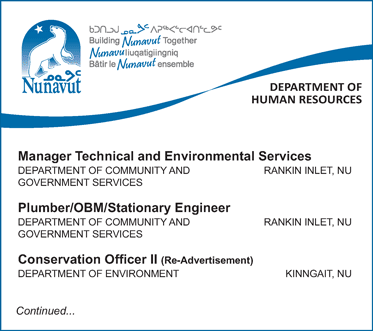The North Pole in Inuktitut
Taissumani: 2009-03-27
There can be few words less needed or more artificial in Inuktitut in any dialect than a word for the North Pole.
In fact, traditionally there was no word for this ephemeral geographical location. No such word was needed, for Inuit ventured nowhere near this ultimate north.
In fact, when Robert Peary claimed to have finally reached the spot, the goal of his unwavering quest of over a decade, his Inuit assistants were astounded to discover that, after travelling for days over ice and snow, there was nothing there except more ice and snow.
What kind of madness was this, that would drive a man to risk life and limb travelling to a spot no different from any other spot they had just passed over?
But Peary's quest, and those of others before and since, created a need for a name, artificial though it might be, for the North Pole.
Even though they lived in closer proximity to the pole than any other Inuit, the Polar Inuit of north-western Greenland had no more need for a word to describe it than did any other Inuit.
They didn't need to describe it because they had never been there. Statements such as those made in 1909 by Herbert Bridgman, a Brooklyn-based mouthpiece for Robert Peary, certainly cannot be relied on. In the New York Times he wrote, "The word of the Eskimos who went with him [Cook] will be of use in getting at the proof… The Eskimos cannot write, but Mr. Peary has told me that they can draw a map of the north pole and the regions surrounding that is remarkable for its accuracy."
There is, of course, nothing surrounding the North Pole for almost 500 miles to draw on a map.
Nonetheless a myth has grown that the Polar Inuit had a word for the Pole, that it was "Tigishi," and that it meant "the big nail." This comes from no less an authority than Dr. Frederick Cook himself, a man who could speak passably well the language of the Polar Inuit, but wrote it abysmally.
The word was reported by Theon Wright, a Cook biographer, with a different spelling, "Tigi-su" in his 1970 book "The Big Nail." (Canadian Inuit eventually coined their own word for the North Pole, calling it "nunaup kajjinga," on the analogy of the crown of the human head, that is to say, "the crown of the earth.)
The lives of the Polar Inuit were dominated by Peary's quest for the pole for almost two decades. Inevitably, they needed a word for the object of his quest. They came up with one, and it is not Cook's inexplicable "Tigishi." Their word is "qalahirriaq." (In standard West Greenland, it would be "qalaserssuaq.")
And it does not mean "big nail," as Theon Wright suggested, but, strangely, it has a meaning close enough in sound that it could be mistaken for that. In fact it means "big navel." How did this remarkable coincidence come about?
Taking away the suffix "ssuaq," which simply means ‘big" or "large", one is left with the word "qalaseq" which means "navel." This is turn derives from the word "qalak," meaning "bubble" or the centre of concentric rings. In fact, the navel is seen as the centre from which life comes.
But how could this have had anything to do with the meaning, North Pole. To answer this we need to turn to our imaginations, for this is no written record to prove (or disprove) what I am going to suggest.
The Polar Inuit of northwestern Greenland interacted with various explorers in their decades-long quest for the ultimate north. The Inuit had never been to the North Pole and had no real conception of what the explorers were searching for.
But they would have watched the explorers in their various expedition quarters, be they aboard ship or in tents or huts on shore, poring over polar projection maps and learning that the object of their quest was the centre of a widening series of latitudinal rings, a "qalaseq" or a type of "qalak."
Thus, the North Pole was eventually conceived of as "the big navel." White explorers, mishearing an explanation from an Inuk who knew some English, incorrectly transformed "navel" to "nail."
It is a simple coincidence that the word "nail" was similar in concept to the English word "pole," something standing erect and phallus-like at the top of the world. Thus the myth was born that the Inuit of northern Greenland called the North Pole "the Big Nail".
Taissumani recounts a specific event of historic interest. Kenn Harper is a historian, writer and linguist who lives in Iqaluit. Feedback? Send your comments and questions to kennharper@hotmail.com.





(0) Comments